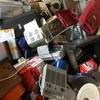India lacks localised solutions to manage e-waste: Pranshu Singhal of Karo Sambhav
In a tête-à-tête with SocialStory, Pranshu Singhal, the Founder of Karo Sambhav, talks about the e-waste policies in India, and the challenges and opportunities regarding their enforcement.
Electronic equipment rendered unfit for use comprises e-waste. It generally consists of discarded computer monitors, motherboards, earphones, TV sets, air conditioners, refrigerators, and mobile phones. Their management and disposal is crucial to the safety of both human and environmental health, since these items are known to contain toxic metals such as mercury, lead, and cadmium.
According to the Global E-Waste Monitor 2017, India generates about two million tonnes of e-waste every year and ranks fifth in the world when it comes to its production.
Despite various rules and policies in place, the country treated only 0.036 tonnes of the above-mentioned total. Besides, a huge chunk of this is recycled crudely by rag pickers from garbage dumps.

Most e-waste generated in India is recycled by unorganised rag pickers.
Has the management of e-waste in India improved over the years? What are some of the gaps? How can we bring in more capacity and efficiency in this space?
Pranshu Singhal, the Founder of Karo Sambhav, one of India's leading Producer Responsibility Organisation (PRO), answers these questions and throws light on the e-waste management system in the country.

Pranshu Singhal
Before establishing the organisation, Pranshu worked with companies, including Microsoft and Nokia, in the sustainability and learning spaces. He was also a Chevening Gurukul Fellow from King’s College London. After completing his master’s degree in environmental management and policy from IIIEE, Sweden, Pranshu designed the world’s largest take-back and recycling programme for mobile phones in India.
He has even participated in several e-waste environmental committees of FICCI, ICA, MAIT and the European Commission.
SocialStory: What is the status of electronic waste management in India today? Has the ecosystem changed in the last few years?
Pranshu Singhal: The scenario has definitely changed. Earlier, a lot of people used to say – ‘why should we manage e-waste?’ Now, the very same individuals are thinking about how they can do it. So, it is very evident that awareness levels among citizens have increased. That said, the systems and processes surrounding electronic waste management still need a great deal of work.
There is a clear absence of localised and contextual solutions when it comes to disposal and recycling. And, it is high time we focus on these.
SS: India has quite a few e-waste rules and policies. One of the most effective among them is the E-waste (Management) Rules, 2016, which places the onus of responsibility of managing and recycling all the e-waste on the manufacturer. How effective has this been and what more needs to be done?
PS: The regulation of Extended Producer Responsibility (EPR) has been picking up steam over the years. It is an effective way to ensure that companies sense an obligation to make up for the environmental impacts of their products – right from the point of production until the electronic items are recycled.
However, the framework concerning EPR needs fine-tuning. Some aspects that need to be woven into it include a fair and level playing field for all producers, ways to build capacity (especially when it comes to enforcement), standard processes in the e-waste value chain, systems for responsible recycling of discarded items, and clear-cut collection/recovery targets.

An e-waste campiagn being held at the school level.
SS: Is electronic waste being collected on par with its generation?
PS: The e-waste being gathered today for further recycling is based on collection targets set by the government, which is now 30 percent of the past sales. In the next financial year, this is bound to become 40 percent. Every year, the government has been raising the target by 10 percent. For instance, if a smartphone company were to collect the e-waste generated by its customers, they would have to go back to their sales numbers five years prior to that date, (considering the average life span of a phone is five years), and collect 30 percent of the total weight of the sold stock.
SS: How is e-waste generation and collection being monitored?
PS: There is actually an absence of foolproof monitoring systems. It is imperative to put in place a digital platform to keep an eye on every step. Right from the time electronic waste is collected till it is completely recycled, including its transfer from one party to another through the value chain, there needs to be a way to track and monitor.
Enforcement is the responsibility of officials of regional pollution control boards. With policies in India at a nascent stage, it might take a considerable amount of time to get things right.

The team of Karo Sambhav conducting an awareness campaign at a resident welfare association meeting.
SS: Efficient e-waste management cannot be achieved with the participation of a single entity. How can we involve other stakeholders in the process?
PS: I think one of the best ways to incite a collaborative effort is to first raise awareness among the public, government bodies, and corporates. This can be done by organising engagement programmes, campaigns, and entering into relevant partnerships.
This is precisely what we are doing at Karo Sambhav – spreading the word across more than 2,500 schools in India, over 500 office complexes, bulk consumers and resident welfare associations, etc, so that each of them understands the significance of proper electronic waste management and disposal. We are also leveraging radio and digital media to keep people informed.
Karo Sambhav has partnered with organisations like International Finance Corporation to bring in private sector investment into e-waste management.
We have a tie-up with Belgium-based WEEE Forum to introduce lucid standards for e-waste collection and disposal. The Public Health Foundation of India is helping us develop safety protocols about handling e-waste. And, last but not the least, we collaborated with the International Labour Organisation to convert the informal rag picking sector into an organised one.
What we are doing at Karo Sambhav is initiating a momentum to resolve the e-waste issue. A multi-stakeholder approach is required at the national level.
SS: What can people do at an individual level to tackle the e-waste menace?
PS: Most households in India are aware that e-waste should not be mixed with other kinds of garbage. So, segregation is not a cause of worry. However, their responsibility does not end once the waste is picked up by a kabadiwala or a ragpicker. People need to ensure that the ragpicker knows where to dump the waste and get it recycled.
SS: Can you elaborate on how Karo Sambhav is tackling e-waste?
PS: Once our employees and volunteers collect e-waste through various channels like schools, colleges, apartments, office spaces, etc, we send it to the warehouse to give everything a bar code. This is, in turn, shipped to government-authorised recyclers for further processing. Each step along the way is tracked digitally to maintain efficiency and transparency.
We have been able to successfully collect and recycle around 9,000 tonnes of e-waste. If this endeavour is replicated and scaled up, I am sure it will create a great impact.

Involving the younger generation in e-waste management is crucial.
SS: How easy or difficult is it to formalise the unorganised waste sector?
PS: If a systematic process is in place, it is quite undemanding. One of the key elements when it comes to creating an organised sector is to put together individual documents of the rag pickers themselves – , PAN, GST number, bank account and so on. Also, they have to be trained to follow certain standards and also stick to a workflow.
SS: Where is India placed when it comes to the recycling infrastructure?
PS: There is a huge gap right now in the recycling capacity of e-waste. We need better systems to dispose of toxic waste. For example, there is little clarity on how to handle polyurethane foam in refrigerators, circuit boards of various gadgets, and certain glass items. So, government intervention in this space is required.
(Edited by Kanishk Singh)









